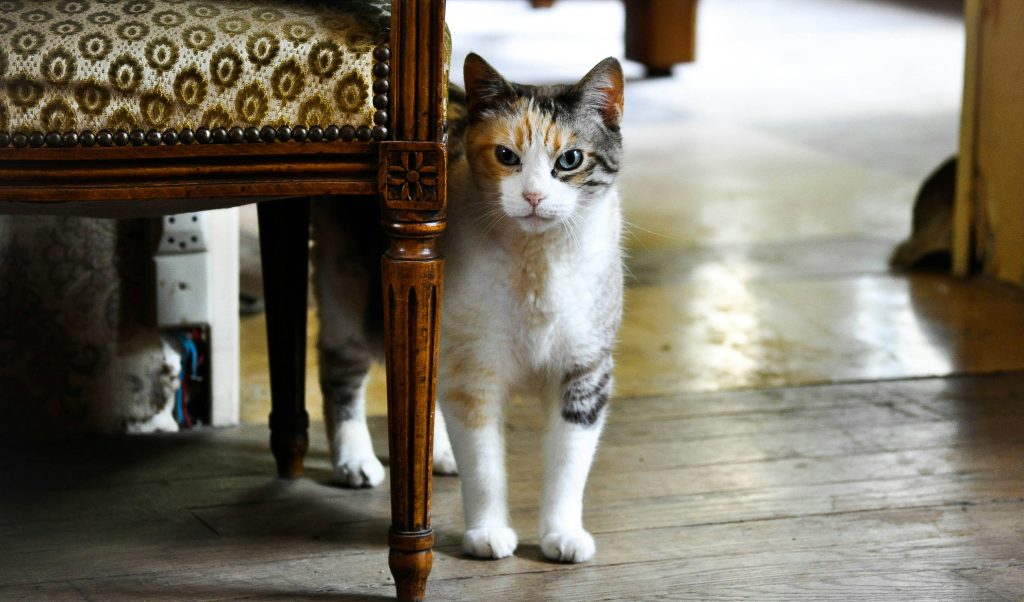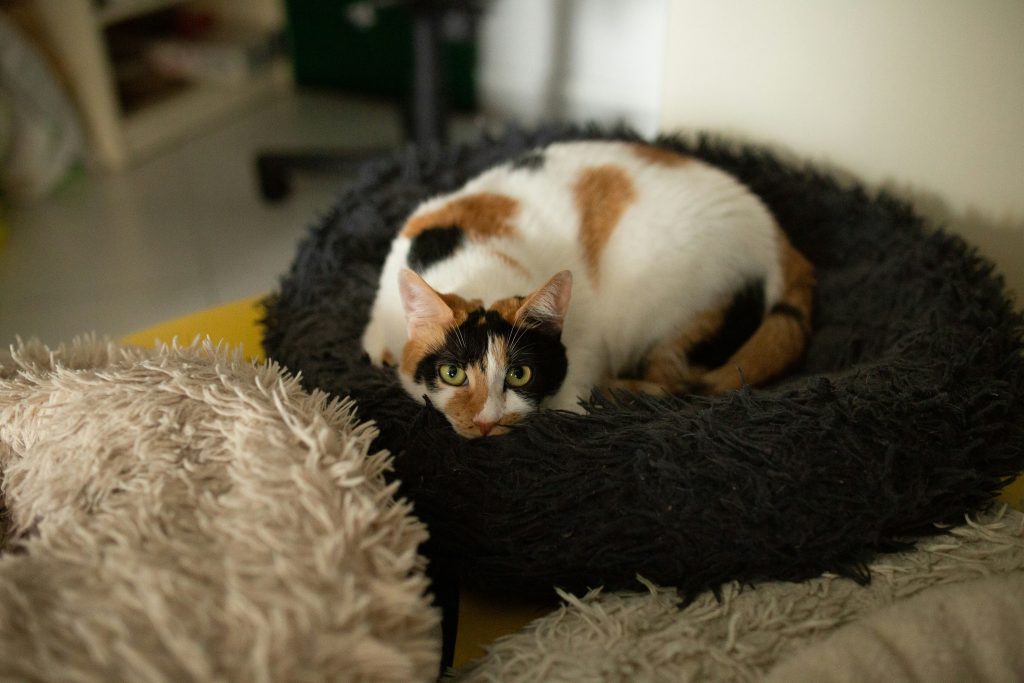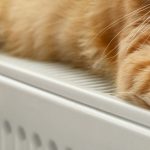Table of Contents
Ensuring your home is safe for your feline friends involves a keen eye and a bit of preparation. Cats are naturally curious creatures, and their ability to jump and climb can lead them into all sorts of mischief. From securing top-heavy furniture to choosing kitty-safe house plants, cat-proofing your home is vital to prevent accidents and ensure your pet’s well-being. Items like rubber bands, dental floss, and plastic bags pose a danger to your cat if eaten or sniffed, and household chemicals should be kept tightly closed and out of reach.
For a complete guide on making your home a paradise for your pets, read on to discover how even your cat’s litter box can be a part of your cat-proofing strategy. Don’t wait until a mishap occurs. Take action now to ensure your home is the perfect haven for your feline family members.
The Essentials of Cat-Proofing Your Home
Start by removing small objects like rubber bands that can be eaten or sniffed, and always check that items toxic for cats are out of paw’s reach. This foundational step helps prevent accidental ingestions and ensures your cat’s exploration doesn’t end in an emergency.
Check Your Windows and Doors for Cat Safety
Assessing windows and doors is essential to protecting your cat or kitten from unexpected falls. Ensure window screens are secure and intact, and consider adding locks or latches to prevent your cat from pushing open windows or doors. Additionally, you can train your cat to stay away from these areas to enhance their safety further.
Securing Furniture and Preventing Toppling Hazards
One critical aspect of catproofing is addressing the stability of top-heavy furniture. A cat tree is a great way to provide your cat with a safe and appropriate outlet for its climbing instincts, reducing the risk of it scaling less stable furnishings.
Anchor Bookshelves and Other Tall Furniture to Walls
Cats are natural climbers and can jump onto surfaces you might not expect them to reach. Anchor bookshelves and other tall furniture securely to the walls to prevent dangerous toppling and ensure your cat’s safety during their vertical adventures.
Store Breakables Safely to Avoid Feline Mishaps
Breakable items should be kept in places where a cat can jump without causing a disaster. High shelves without climbable routes or closed cabinets are ideal spots to display your valuable or fragile possessions away from curious paws.
The Importance of Proper Plant Selection
When choosing house plants, selecting safe varieties is crucial since cats love to chew on greenery. African violets are a beautiful and secure option for homes with felines, ensuring that your decor doesn’t pose a risk to your pets.
Identify and Remove Plants Toxic to Cats
Scour your home for plants that are toxic to cats and remove them to prevent accidental poisoning. It’s better to err on the side of caution and opt for cat-friendly flora throughout your living spaces.

Cat-Proofing Specific Areas of Your Home
Each room presents unique challenges; identifying and addressing items toxic for cats is paramount to ensure their safety throughout your home.
Safeguarding the Living Room for Your Feline Friend
Living rooms often contain items like blind cords, phone chargers, and plants such as sago palms, which are poisonous to cats. Use window treatments without looped cords, and consult a veterinarian before bringing any new plants into your home. Curious cats will explore every inch, so keep cords out of sight and reach.
Tidy Electrical Cords and Conceal Them From Curious Paws
Cats can wreak havoc with loose cords, so tidy them away and secure them with double-sided tape or invest in some cord protectors. This simple step can prevent your cat from chewing on cables, which could harm them and your electronics.
Stow Away Small Items That Pose a Choking Hazard
Ensure that small objects like paper clips are kept in closed drawers or containers. Cats are known for their playful nature, but these small items can quickly become choking hazards if left within reach.
Laundry Room Perils: Preventing Laundry Mishaps
Laundry rooms contain appliances and substances that could harm your cat. Keep the doors to washers and dryers firmly closed, and safely store windshield fluid and other chemicals.
Keep Appliance Doors Shut and Detergents Out of Reach
Always keep the doors to your clothes dryer and other appliances shut when not in use. This precaution prevents curious felines from climbing inside, which could lead to accidents when the appliances are turned on. Similarly, store detergents and other cleaning products out of reach to prevent ingestion.
Secure Trash Cans and Hampers to Discourage Feline Exploration
Items such as dental floss, which could be harmful if ingested, should be disposed of in trash cans with a closed lid. Hampers should also be secured to keep your cat from rummaging through dirty laundry and potentially finding something dangerous to play with or eat.
Before Bringing Your Cat Home: Kitten-Proofing Tips
Before a kitten graces your living space, it’s critical to minimize danger to your cat by identifying potential hazards. Cats are curious creatures drawn to dangling cords and shiny objects. Secure exposed electrical cords behind entertainment centers or under aluminum foil, a texture cats typically avoid. Additionally, store away small items like laundry detergent pods and ensure cleaning supplies are locked away. Remember, toxic plants and household cleaners pose some of the biggest dangers to your feline’s health.
Protecting Your Feline From Common Household Dangers
Toxic plants and easily swallowed small objects are potentially dangerous to kittens, who are likely to explore their new environment with enthusiasm. It’s vital to maintain a secure habitat for your new pet to ensure these potential hazards are out of reach.
Ensure Household Chemicals and Medications Are Inaccessible
Household cleaners and medications can be highly toxic to cats. Store these substances in high cabinets the cat cannot access to safeguard your kitten. Consider installing child-proof locks on cabinet doors to prevent clever paws from prying them open. Also, litter boxes should be kept clean and away from areas where household chemicals are used, as cats could inadvertently track these substances through their living space.
Take Precautions With Electric Cords and Blind Cords
To make your home kitty safe, conceal electric and blind cords as they can be enticing to playful kittens. Use cord organizers and clips to secure them to walls or furniture, and consider wrapping cords in protective casings to prevent chewing, which could lead to electrical shock or strangulation.

Maintaining a Safe and Hygienic Litter Area
A cat’s litter box should be placed securely away from household chemicals and heavy foot traffic. This ensures hygiene and provides a private space for your cat to do their business. Regular cleaning with safe, non-toxic products will keep this area welcoming and odor-free.
Choosing the Right Location and Litter for Your Cat
The correct cat litter is essential for your pet’s comfort and health. Opt for a dust-free and unscented brand to prevent respiratory issues and allergies for both you and your cat.
Verify Your Litter Box Is Placed in a Secure Area
The placement of your cat’s litter box is critical for their well-being. Ensure it’s located in a low-traffic, quiet area where your cat feels safe. Avoid placing it near their food and water bowls, as cats naturally prefer to separate these areas.
Select a Cat Litter Brand You and Your Cat Can Trust
When choosing cat litter, look for a trusted brand that offers reasonable odor control and easy clumping for cleanup. It’s also essential to find litter that’s low in dust to help maintain a clean environment and reduce respiratory irritants for your cat.
Concluding Thoughts on Creating a Cat-Friendly Home Environment
In summary, a cat-friendly home is a harmonious blend of safety measures and thoughtful accommodations that ensures the well-being of your furry friend. Implementing strategies to secure windows, doors, furniture, and hazardous items creates a sanctuary where kittens and cats can explore and relax without risk. Utilizing cord covers and non-toxic deterrents like bitter apple helps protect both your pet and your home.
Remember, providing a loving environment where your feline companions can thrive is the goal. With patience and care, you can enjoy the peace of mind that comes from knowing your home is a haven for all its inhabitants.

Hi, I’m Zoey, a devoted mom to two charming Siamese cats. My passion lies in assisting fellow pet owners in providing optimal care for their cats. On CatsEuphoria, I share practical tips and relatable stories, inviting you to join me in appreciating the authentic bond between humans and our beloved feline companions.




